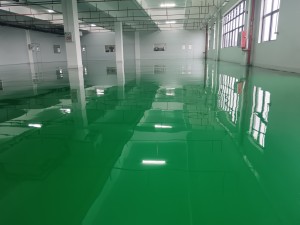Domestic Floor Paint Market Shows Robust Growth and Transformation in August 2025
The domestic floor paint market is demonstrating robust growth and notable transformation as of August 2025, fueled by economic expansion, policy guidance, and technological advancements.
Market size continues to expand
The domestic floor paint market has reached approximately RMB 230 billion, with projections suggesting it could exceed RMB 500 billion within the next five years. By the end of 2025, the market is expected to hit RMB 400 billion, reflecting a significant 30% increase compared to 2023. This growth is closely linked to the booming construction sector and ongoing urbanization. Epoxy floor paints maintain a dominant position, accounting for 62% of the market. China’s epoxy floor paint segment alone is anticipated to surpass RMB 400 billion in 2025, making up 65.3% of the total market and solidifying its leading role.
Policy-driven green transition
The implementation of the new national standard “Limits of Hazardous Substances in Paints—Part 1: Architectural Paints” (GB 30981.1-2025), effective since May 30, 2025, has significantly reshaped the industry. The standard imposes stricter limits on harmful substances such as VOCs, formaldehyde, and heavy metals, with a reduction of over 30%. It also brings anti-static and anti-corrosion specialty floor coatings under regulation for the first time. As a result, the market share of solvent-based epoxy paints is expected to drop from 58% in 2025 to 32% in 2026, while water-based epoxy paints are projected to rise from 27% to 45% during the same period. In regions like the Yangtze River Delta, local standards are even more stringent. For instance, Shanghai’s DB31/881-2024 imposes requirements 20% stricter than the national standard, pushing local companies to increase R&D investment to 5.3%, well above the industry average of 3.1%.
Diverse sector-specific demand
The industrial sector remains the largest driver of floor paint demand, contributing over 65% of the market. With upgrades in industries such as automotive and electronics, demand for functional floor paints—especially anti-static and corrosion-resistant types—has risen sharply. Usage of anti-static floor paints in electronics factories has exceeded 30%. National initiatives such as the “East Data, West Computing” project have also spurred a 76% surge in demand for floor paints in data centers across central and western regions, opening new growth opportunities.
In the commercial sector, as consumer experience gains emphasis, floor paints that offer both aesthetic appeal and functionality are in high demand. Decorative and colored floor paints are increasingly used in shopping malls and restaurants. In the residential sector, particularly in high-end housing, environmentally friendly and comfortable floor paints are growing in popularity. Water-based floor paints have become a top choice for homeowners due to their low VOC emissions.
Technological innovation drives progress
The industry is experiencing rapid technological evolution, with water-based resins, nano-modification, and UV curing leading the way. Nano-modification has improved product wear resistance by 40%, while self-healing coatings can extend service life by 30%. Intelligent construction technologies leveraging IoT and big data have achieved a construction accuracy of ±1 mm and improved efficiency by 50%. In line with China’s “Dual Carbon” goals, bio-based floor materials are emerging, and the market share of water-based epoxy floor paints is expected to grow by 35%.
Regional dynamics
Eastern China, particularly the Yangtze River Delta and Pearl River Delta regions, remains the largest consumer market, accounting for 35% of national demand. Intense competition in these areas has led to a 20% price premium for high-end products. Central and western regions, driven by infrastructure investments, are growing at an annual rate of 12%. Construction of industrial parks and infrastructure projects in these regions continues to stimulate demand for floor paints.
In summary, as of August 2025, the domestic floor paint market is defined by vigorous growth, policy-led transformation, diverse demand across sectors, and continuous innovation. Staying attuned to these trends will be essential for industry participants to maintain competitiveness.

